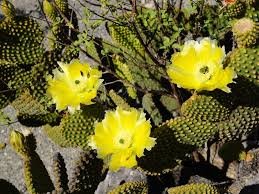
The giant panda, native to the mountains of central China, has long been an emblem of conservation efforts worldwide. Its plight, marked by habitat loss, poaching, and reproductive challenges, has spurred intense research and conservation activities aimed at protecting the species. These efforts have not only benefited the panda but also provided valuable insights into the broader field of wildlife conservation. In recent decades, the research on pandas has become an integral part of global wildlife conservation initiatives, demonstrating how targeted studies on a single species can contribute to the protection of biodiversity and the preservation of ecosystems worldwide.
In this article, we will explore the deep connections between panda research and broader wildlife conservation strategies. We will examine how studies on the panda have influenced global conservation policies, the importance of the panda as a flagship species for broader environmental protection efforts, and how these research-driven initiatives can provide solutions for the conservation of other endangered species across the globe.
1. Pandas as a Symbol of Conservation
The giant panda has long been considered a symbol of global wildlife conservation. Its charismatic appeal and distinct characteristics make it an ideal representative for conservation campaigns, raising awareness about the urgent need for species protection. Since the 1980s, when the International Union for Conservation of Nature (IUCN) officially listed the panda as endangered, the species has become a focal point for global conservation efforts.
The giant panda’s vulnerability is primarily due to habitat loss, especially the destruction of the bamboo forests that provide its primary food source. With bamboo forests shrinking due to human encroachment and climate change, pandas face significant survival challenges. The focus on pandas has thus contributed to a greater understanding of how human activities and climate change can impact not only individual species but also entire ecosystems.
Through global awareness campaigns, the panda has raised millions of dollars for wildlife protection, driven policy changes, and rallied people worldwide to take action on behalf of endangered species. These efforts have extended far beyond the panda’s natural range, with researchers and conservationists applying lessons learned from panda conservation to other species facing similar threats.
2. Panda Research and Global Conservation: Shared Goals and Strategies
Research into the behavior, genetics, ecology, and health of the panda has led to the development of several key conservation strategies that are not only beneficial for pandas but also applicable to other endangered species. The research-driven conservation approaches used for pandas have had significant impacts on global wildlife conservation efforts, particularly in terms of habitat restoration, species recovery programs, and the creation of wildlife corridors.
2.1 Habitat Restoration
One of the main focuses of panda research has been on restoring and maintaining the natural habitats that sustain the species. As bamboo forests are integral to the panda’s survival, a large portion of conservation funding has gone toward preserving and restoring bamboo forests in China. The methods developed in panda habitat restoration projects are now being applied to other species and ecosystems across the globe.
For instance, the restoration of degraded habitats in China’s panda reserves has led to the successful recovery of bamboo forests in areas once ravaged by logging and agricultural expansion. By replanting bamboo and ensuring that it grows in stable environments, researchers have learned important lessons about restoring ecosystems that can be applied to other wildlife habitats around the world.
These restoration strategies are now being utilized for other endangered species, such as the orangutans in Southeast Asia and the African forest elephants. These projects focus on not just replanting trees but creating sustainable ecosystems that can support various species, ensuring that biodiversity thrives.
2.2 Genetic Research and Species Recovery Programs
Panda research has also contributed significantly to understanding genetic diversity, a critical factor in the long-term survival of endangered species. Inbreeding and genetic bottlenecks are major concerns for small, isolated populations, and researchers have used the panda’s population genetics to inform strategies for maintaining healthy gene pools.
Scientists have utilized genetic data to understand the relationship between different panda populations, enabling the development of strategies to improve gene flow between isolated groups. The use of genetic tools has allowed for the creation of wildlife corridors, ensuring that pandas and other species can interbreed and maintain a diverse gene pool.
The application of genetic research to panda conservation has also impacted other species, such as the Amur tiger and snow leopards. By studying genetic markers and evaluating the health of these species, researchers have developed effective breeding programs and strategies to protect the genetic diversity of wildlife populations worldwide.
2.3 Wildlife Corridors and Connectivity
The creation of wildlife corridors is another vital strategy inspired by panda research. As panda habitats were fragmented by human activity, scientists recognized the importance of connecting these fragmented forests to ensure that pandas could roam freely and maintain genetic diversity. The establishment of wildlife corridors has been one of the key successes in panda conservation, allowing for the safe migration of pandas between habitats.
This concept of connectivity has extended to other species globally. For example, wildlife corridors have been created in North America for species like the grizzly bear and the mountain lion, in Africa for elephants and other migratory species, and in South America for jaguars. These corridors allow animals to move freely between protected areas, reducing the risk of inbreeding and ensuring that ecosystems remain intact.
Research on panda movement, behavior, and habitat use has provided valuable data on how to design and implement wildlife corridors that maximize species survival. The lessons learned from panda research have shaped the development of conservation policies that promote biodiversity and ecosystem connectivity across the globe.
3. The Role of Panda Research in Global Biodiversity Conservation
Panda research has had a significant influence on broader biodiversity conservation policies. Because pandas are flagship species, efforts to conserve them have led to the protection of many other species in the same ecosystem. The creation of panda reserves and protected areas has simultaneously safeguarded other wildlife, including the red panda, golden monkeys, and various bird species.
The panda’s iconic status has also helped galvanize global support for biodiversity conservation. By focusing on a species that is both charismatic and highly vulnerable, panda research has drawn international attention to the broader issue of biodiversity loss. The research initiatives that have been developed for pandas, such as habitat protection, species monitoring, and population management, are now being applied to other regions and species facing similar challenges.
Global organizations like the World Wildlife Fund (WWF) have used the panda’s story as a case study in successful conservation, demonstrating that conservation is possible with proper funding, research, and international collaboration. The WWF’s work with pandas in China has helped shape the organization’s broader strategy for wildlife conservation, including efforts to protect rainforests in the Amazon, savannas in Africa, and coral reefs in the Pacific.
4. The Importance of Collaborative Efforts in Panda and Wildlife Conservation
The success of panda conservation is a testament to the importance of collaboration between researchers, governments, non-governmental organizations (NGOs), and local communities. The involvement of local communities in conservation efforts has been crucial in ensuring the success of wildlife protection programs. By working together, these groups have developed policies and practices that protect both pandas and the communities that live near them.
These collaborative efforts have extended beyond China’s borders, with international teams of researchers and conservationists working together to address global challenges. From biodiversity monitoring and data-sharing initiatives to global fundraising campaigns, the link between panda research and global wildlife conservation is undeniable.
International organizations such as the Convention on Biological Diversity (CBD) and the International Union for Conservation of Nature (IUCN) have drawn on panda conservation lessons to develop guidelines and policies for the protection of endangered species worldwide. The success of panda conservation has shown that, with sufficient resources and cooperation, it is possible to achieve positive outcomes for wildlife populations.
5. Challenges and Opportunities for the Future
While significant progress has been made in panda conservation, many challenges remain. Habitat loss continues to be a major issue, and climate change is exacerbating the vulnerability of panda habitats. The fragmentation of habitats remains a concern, particularly as human development encroaches on previously protected areas.
However, the ongoing research into panda ecology and behavior provides hope for the future. With improved methods of habitat restoration, better wildlife corridor designs, and continued international collaboration, there is potential to further enhance the conservation of pandas and other species.
As the world continues to face mounting environmental challenges, the lessons learned from panda research and conservation will remain crucial in shaping global efforts to protect biodiversity. Pandas, as a flagship species, have played a pivotal role in the development of global wildlife conservation strategies, and their continued conservation is essential not just for their own survival but for the health of the planet’s ecosystems.
6. Conclusion
The link between panda research and global wildlife conservation is profound and multifaceted. Through intensive research on panda behavior, genetics, and habitat restoration, scientists have developed strategies that not only benefit pandas but also enhance the protection of other species worldwide. By focusing on the conservation of pandas, researchers have contributed to global biodiversity conservation efforts, paving the way for broader wildlife protection policies and successful conservation outcomes.
The panda’s journey from an endangered species to one that is slowly recovering is a testament to the power of research, international collaboration, and the importance of protecting ecosystems for the benefit of all species. As we continue to address global environmental challenges, the lessons learned from panda conservation will serve as a guide for future efforts to preserve the planet’s rich biodiversity for generations to come.







